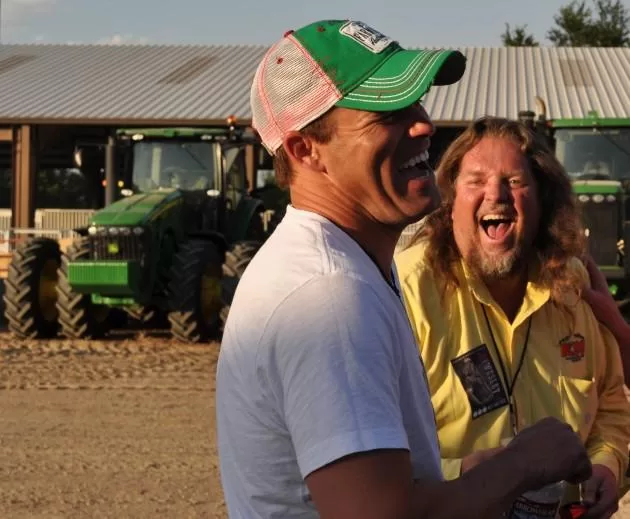Unknown to most of the world, Israeli dairy farmers have developed one of the most advanced dairy industries in existence. This small country with a turbulent political history, scarce resources and one of the worse climates in which to milk cows has pioneered impressive innovations in the field. Early Jewish settlers from Eastern Europe created the Israeli Friesian breed after generations of hybrid planning, leading to a cow with the highest milk yield and solids percentage in the world, as well as a remarkable resistance to heat. Today, they continue to engage technology with notable focus, from every breeding programmed on handheld computer terminals to experimental housing designs.
Nonetheless, one of the most interesting aspects of the Israeli dairy industry is its structure. There are two core types of farming settlements in Israel: the Kibbutz and the Moshav. The Moshav is a community of farms next to each other. Although each family runs their own individual operation, the settlement works together cooperatively to share resources and labor. All neighbors are farmers and live together in a mutual existence. A Kibbutz, on the other hand, is a large operation in which every member of the establishment has a specific duty and equally owns a part of the farm. All profit and responsibility is divided. In a Kibbutz, the farm is the community.
Unlike the settlements in Israel, there are only a few other farmers in our area, and we seldom see them. Sharing equipment and antibiotics does happen, but it is rare. Worst of all, as more farms go out of business our neighbors get further apart. It may be tempting to consider the term “farming community” as merely metaphorical in the United States.
Still, when Dan Brickard’s barn burnt down his driveway was soon filled with farmers and former 4-H members he taught, ready to be put to use. A local farmer that no longer had any cattle took in his herd so they could be milked. Others rotated shifts in the parlor, offering a helping hand, or in the least, company, while the Brickards began to sort out the situation they found themselves in. It was a moment that offered proof that there is very much a community within the dairy industry—even if it isn’t geographically defined.
The State of California, throughout its history, has always been preoccupied with the future. In fact, within it is the Institute For The Future, which evaluates what the state may look like in 10, 30 or 50 years in hopes of promoting trends that lead to the best possible outcomes. The IFTF believes that as time progresses communities will be increasingly based on social networking instead of streets and municipalities. Progressive Dairyman readers already have a taste of this with ProudToDairy, an online gathering point where members can connect over various issues or experiences. Nonetheless, it appears to me that the farming community has been held together by a social networking of another kind.
My uncle is an old hauler that picks up our bull calves on Mondays or Thursdays, if we have any to send in. He tells us what to expect from them, what he thinks the milk price will be next month, and all the gossip and news about the farmers we know but may only see at the annual Holstein Club Sale, if then. We push the reluctant calves in front of us, block them with our knees when they try to turn back, and barter with rumors of who got hurt or bought a new tractor, knowing that he’ll do the same on every farm he visits that day. My uncle is part of a network of milkmen, AI salesmen, supply servicemen and seed vendors whose truck parks next to our milk house from time to time. We often roll our eyes and are sometimes genuinely annoyed to stop what we’re doing to respond to their wave, but even if we don’t buy anymore teat dip or semen we still usually come away with knowing something about somebody else. In some ways, these men hold up the structure of a farming community that is dispersed and busy.
Although our area is hardly comparable to a Moshav, there is evidence of a strong farming community remaining. It occurs when parents and volunteers come together to make 4-H and Jr. Holstein programs for young adults. It is apparent when one farmer gets hurt or loses a barn and finds others there waiting to help. It occurs when farmers express ideas through magazines, social networks, and the feed truck driver. It is a union based not on proximity, but shared experience. Farmers may seldom see each other, but they know that there are others like them out there, facing similar challenges. If anything, it makes milking cows a little less lonely, which might be the chief purpose of community after all. We might not be able to tip a five gallon bucket over, stand on it, and see other farmers all around us, but as long as someone still picks up our milk and sells us corn seed, geography is void.
*
This article is part of The Milk House column series, published in print across three countries and two languages. It can also be found at themilkhouse.org.
This article appeared in a similar form in Progressive Dairyman in 2012.

